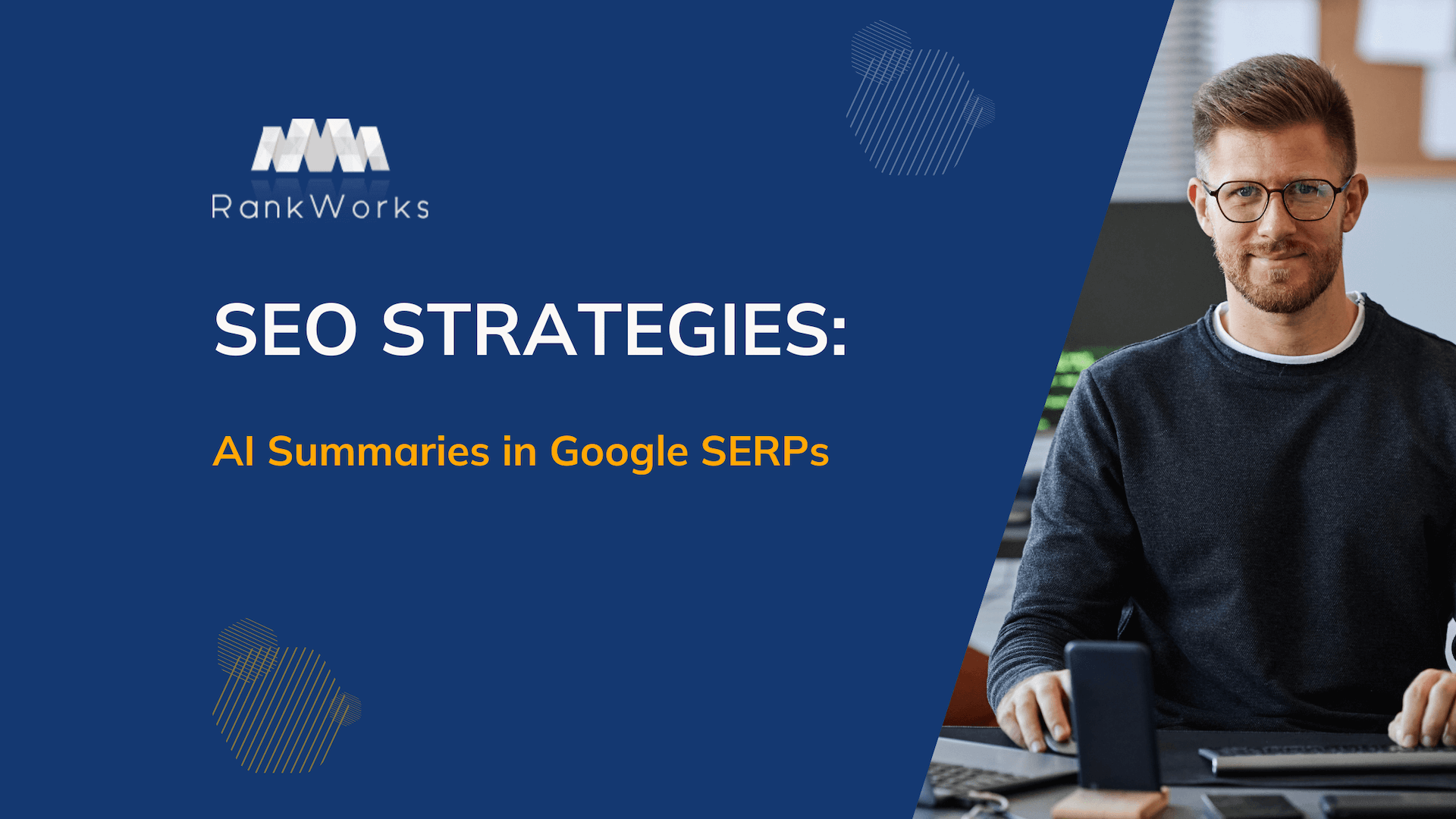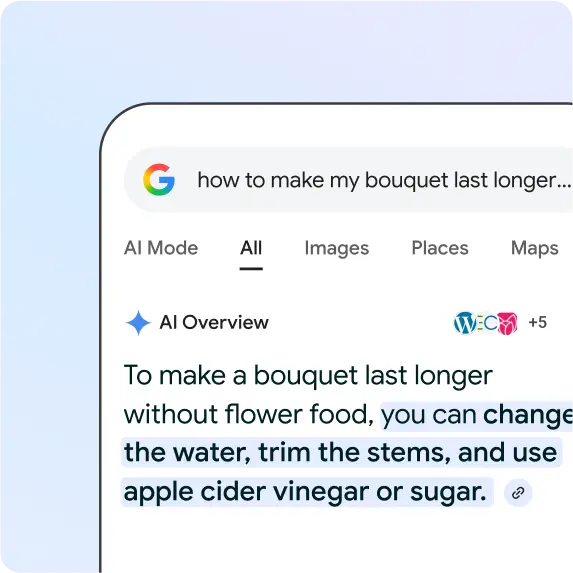
SEO Strategies to Win AI Summaries in Google SERPs
Introduction
Google’s integration of AI-generated summaries and overviews directly into search result pages represents a seismic shift in how users discover and consume information. In this post, we’ll refer to these features as AI summaries or AI Overviews interchangeably, emphasizing their role in delivering concise, authoritative answers. Gone are the days when traditional featured snippets were the sole way to secure prime search placement. Now, AI-driven summaries,often sourced from multiple pages, rich data sets, and authoritative content,can appear at the top of the SERP. Understanding and optimizing for these AI summaries isn’t optional; it’s essential for any brand that wants to maintain visibility and authority in 2025 and beyond.
In this comprehensive guide, we’ll follow a proven, step-by-step framework to help you capture AI summary snippets. We’ll also highlight how RankWorks’ In-Site platform simplifies monitoring, reporting, and iterative optimization for AI summary positions. You’ll learn how to identify the queries most likely to trigger AI content, structure your pages for optimal comprehension, and leverage schema and technical tactics to feed Google’s AI the precise signals it needs. With real-world case studies,from a health information portal that secured AI overviews for medical queries to a travel site that captured AI highlights for destination guides,this playbook will equip entrepreneurs, in-house marketers, and SEO specialists with the tools and tactics to thrive in an AI-first search landscape.
Table of Contents
- Understanding AI Summaries and AI Overviews in Google SERPs
- Why AI Summary and AI Overviews Optimization Matters
- Step 1: Identify Queries and Topics Prone to AI Summaries
- Step 2: Optimize Content Structure and Clarity
- Step 3: Provide Concise, Authoritative Answers
- Step 4: Implement Structured Data and Semantic Markup
- Step 5: Use Visuals and Data to Enhance AI Understanding
- Step 6: Monitor AI Summary Performance and Feedback Loops
- Step 7: Iterate and Refine Based on AI Behavior
- Case Study: HealthInfoPro’s AI Snippet Success
- Case Study: Wanderlust Travel’s Destination Overviews
- Advanced Tactics for Power Users
- Essential Tools and Resources
- Conclusion: Future-Proofing Your SEO in an AI-Driven World
- Understanding AI Summaries in Google SERPs
AI summaries,also known as AI overviews or AI-generated snippets,are concise, context-rich paragraph or bullet-point summaries generated by Google’s underlying large language models. Unlike classic featured snippets, which extract a single passage verbatim, AI summaries synthesize information across multiple sources to deliver a holistic answer. These summaries appear above organic listings, often alongside a “Learn More” link funneling users to detailed content.

Key Characteristics:
- Multi-source synthesis: Aggregates data from several high-authority pages.
- Dynamic formatting: Can include bullets, numbered steps, or brief paragraphs.
- Contextual relevance: Adjusts tone and depth based on query intent.
Why it Matters:
Securing an AI summary position can drive significant click-through rates (CTRs) and brand awareness. According to internal RankWorks data, pages featuring AI overviews see an average 30% higher session duration and a 20% boost in organic traffic compared to non-featured URLs.
- Why AI Summary Optimization Matters
As of mid-2025, over 25% of queries in competitive verticals like health, finance, and travel trigger AI summaries. If your content isn’t structured to win these slots, you risk ceding the most visible real estate to competitors or to Google’s own Knowledge Graph cards. Moreover, AI summaries often serve as the answer box for voice search and digital assistants, further amplifying the importance of capturing and optimizing for them.
Business Impacts:
- Visibility: Being featured in an AI summary instantly positions your brand as an authority.
- Engagement: Users encountering concise, accurate answers are more likely to click through, reducing bounce rates.
- Trust: Demonstrating expertise and clarity builds trust, aligning with Google’s EEAT principles.
- Step 1: Identify Queries and Topics Prone to AI Summaries
3.1 Use SERP Analysis Tools
- Leverage tools like SEMrush or Ahrefs to filter for queries showing AI overview boxes. Export a list of target keywords and group them by intent (informational, transactional, navigational).
3.2 Analyze Competitor AI Appearances
- Identify which competitor pages currently occupy AI slots for your target topics. Note their content structure, depth, and use of data visualizations.
3.3 Prioritize by Impact and Relevance
- Focus on high-volume queries with clear informational intent. For example, “how to calculate mortgage amortization” may trigger AI summaries, whereas branded navigational queries often do not.
- Step 2: Optimize Content Structure and Clarity
4.1 Write Descriptive Headings
- Use clear, question-based H2 or H3 headings that match the query. E.g., for a query “benefits of intermittent fasting,” use “What Are the Benefits of Intermittent Fasting?”
4.2 Follow a Logical Flow
- Begin with a concise definition or overview, followed by bullet-pointed key benefits or steps, then deeper explanations.
4.3 Keep Paragraphs Short
- AI models favor digestible chunks of text. Aim for 40–60 words per paragraph, with 2–4 sentences each.
Real-World Tip: A personal finance blog saw its “compound interest formula” page jump from position six to winning the AI overview after restructuring the first 200 words into a definition and three bullet points.
- Step 3: Provide Concise, Authoritative Answers
5.1 Cite Authoritative Sources
- Reference and link to academic studies, industry benchmarks, or official statistics. Use inline citations or parenthetical notes (e.g., “According to the National Institutes of Health…”).
5.2 Use Exact Phrasing
- Mirror the natural language of user queries without keyword-stuffing. AI systems match semantically related phrases, so include synonyms and related terms.
5.3 Include Key Metrics and Data
- Incorporate figures, percentages, or dates that answer the question directly: “The average ROI for content marketing was 4.2x in 2024.”
- Step 4: Implement Structured Data and Semantic Markup
6.1 FAQ and HowTo Schema
- Use JSON-LD to mark up questions and answers. Even if Google doesn’t always surface FAQ snippets, schema provides explicit signals to AI models.
6.2 Article and WebPage Schema
- Define your content type clearly. Include properties like author, datePublished, and publisher.
6.3 Dataset Schema for AI Models
- If you publish original data (e.g., survey results), use Dataset schema to highlight tables or downloadable files.
- Step 5: Use Visuals and Data to Enhance AI Understanding
7.1 Annotate Charts with Alt Text
- Describe charts in detail: “Line chart showing a 20% increase in organic sessions between Q1 and Q4 2024.” AI can reference this text when generating summaries.
7.2 Embed Tables with HTML
- Simple HTML tables with header rows help AI parse key metrics.
7.3 Include Inline Definitions
- Add parentheses for acronyms and technical terms: “Natural Language Processing (NLP) uses algorithms to analyze text.”
- Step 6: Monitor AI Summary Performance and Feedback Loops
8.1 Leverage Google Search Console
- Filter Performance reports by “Search appearance: AI overview.” Track impressions, clicks, and CTR for those pages.
8.2 Use RankWorks In-Site Alerts
- Set up notifications when AI summary positions change,both gains and losses.
8.3 Conduct Manual SERP Audits
- Quarterly, perform manual checks for your top 20 target queries to confirm AI summary appearance.
- Step 7: Iterate and Refine Based on AI Behavior
9.1 A/B Test Content Variations
- Experiment with different opening formats (bullet list vs. paragraph) to see which yields AI feature placements.
9.2 Update Based on New AI Features
- As Google rolls out capabilities (e.g., video clip summarization), adapt by adding transcribed captions to embedded videos.
9.3 Prune and Consolidate
- Remove outdated sections or merge multiple small answers into a cohesive overview to strengthen content signals.
- Case Study: HealthInfoPro’s AI Snippet Success
Background: HealthInfoPro aimed to capture AI summaries for medical queries such as “symptoms of vitamin D deficiency.” Their content was detailed but buried in long-form articles.
Action Plan:
- Identified top 15 medical queries triggering AI summaries.
- Restructured articles with clear H2 questions and bullet-pointed symptom lists.
- Added citation schema linking to PubMed and WHO guidelines.
- Launched an interactive symptom checker widget with annotated alt text.
Results:
- Secured AI overview slots for 9 of 15 target queries within eight weeks.
- Saw a 45% increase in organic traffic to those pages.
- Reduced bounce rate on medical content by 20%.
- Case Study: Wanderlust Travel’s Destination Overviews
Background: Wanderlust Travel produced long guidebooks for cities but lacked concise overviews. They missed AI summary placement for queries like “things to do in Kyoto.”
Action Plan:
- Created a “Quick Facts” section at the top with 6–8 bullet points covering highlights, seasonality, and transportation tips.
- Marked up the section with FAQ schema: question “What are the top things to do in Kyoto?” and bullet answer.
- Embedded a sortable HTML table listing attractions by district.
Results:
- Captured AI summary boxes for “things to do in Kyoto” and related queries in 5 weeks.
- Increased click-through rate on SERPs from 12% to 27%.
- Grew average time on page from 3m15s to 5m10s.
- Advanced Tactics for Power Users
12.1 API-Based Content Feeds
- Use dynamic JSON-LD scripts to feed up-to-date statistics or pricing information that AI can reference in real time.
12.2 Video Transcript Markup
- Provide full transcripts with timestamps and label speaker roles. AI can extract key soundbites for summary.
12.3 Cross-Domain Authority Signals
- Publish guest summaries on reputable third-party sites and link back to your canonical page with rel=ugc to signal user-generated context.
- Essential Tools and Resources
• Google Search Central Blog – updates on AI features and schema best practices
• JSON-LD Playground – test and validate structured data
• Ahrefs & SEMrush – SERP feature tracking filters for AI summaries
• RankWorks In-Site Platform – automated AI overview monitoring and alerting
- Conclusion: Future-Proofing Your SEO in an AI-Driven World
AI-generated summaries in Google SERPs represent both a challenge and an opportunity. By understanding the mechanics behind these features, structuring your content for clarity, and providing authoritative, data-rich answers, you position your brand to dominate the most visible spots in search. Remember to monitor performance, iterate on your tactics, and stay abreast of Google’s evolving AI capabilities. With this playbook in hand, you’re well-equipped to turn AI summary optimization into a sustained competitive advantage.

